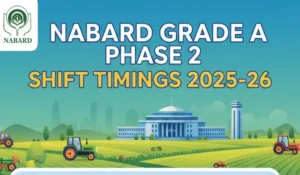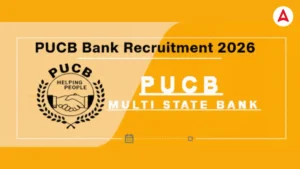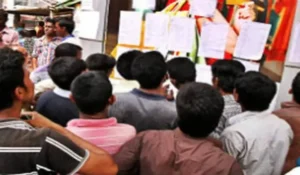Q1. How is Y related to P?
I.P is the mother of X, who is the only brother of Y.
II. Q is the father of Z, who is the sister of Y.
III. P has three children in which only one is son.
(b) All I, II and III are required to answer the question.
(c) Only II and III are sufficient to answer the question.
(d) Question cannot be answered even with all I, II and III.
(e) Only I and II are sufficient to answer the question.
Q2. Who among A, B, C, D, E and F, each having a different height, who is the shortest?
I. E is taller than D. B is taller than F and E.
II. A is shorter than only one person .F is taller than D.
III. E is taller than F.
(a) Only I and II are sufficient to answer the question.
(b) Only I and III are sufficient to answer the question.
(c) Only II and III are sufficient to answer the question.
(d) All I, II and III are required to answer the question.
(e) All I, II and III even together are not sufficient to answer the question.
Q3. Towards which direction is Town J from Town W?
I. Town R is to the west of Town W and to the north of Town T.
II. Town Z is to the east of Town J and to the south of Town T.
III. Town M is to the north-east of Town J and to the north of Town Z.
(a) Only III is sufficient to answer the question.
(b) Only II and III sufficient to answer the question.
(c) All I, II and III are required to answer the question.
(d) Question cannot be answered even with all I, II and III.
(e) Only I and II sufficient to answer the question.
Q4. On which day of the week did Mohit visit Noida?
(Assume that the week starts from Monday.)
I. Mohit took a leave on Wednesday.
II. Mohit visited Noida the day after his mother’s visit to his house.
III. Mohit’s mother visited Mohit’s house on neither Monday nor Thursday.
(a) Only II and III are sufficient to answer the question.
(b) Only I and II are sufficient to answer the question.
(c) Only I and III are sufficient to answer the question.
(d) All I, II and III are required to answer the question.
(e) Question cannot be answered even with all I, II and III.
Q5. How is ‘go’ written in a code language?
I. ‘now or never again’ is written as ‘to ka na sa’ in that code language.
II. ‘you come again now’ is written as ‘ja ka ta sa’ in that code language.
III. ‘again go now or never’ is written as ‘na ho ka sa to’ in that code language.
(a) Only I and III are sufficient to answer the question.
(b) Only II and III are sufficient to answer the question.
(c) Only I and II are sufficient to answer the question.
(d) All I, II and III are required to answer the question.
(e) None of these
Directions (6-10): In the questions below are given two conclusions followed by five set of statements. You have to choose the correct set of statements that logically satisfies given conclusions either definitely or possibly. Assume the given statements to be true even if they seem to be at variance from commonly known facts.
Q6. Conclusions: Some F is A. No E is C.
Statements:
(a)Some F is B. All B is C. No C is D. All D is A. Some D is E
(b)Some F is B. All B is A. No A is C. All D is C. Some C is E.
(c)All A is F. No F is C. All B is C. Some C is D. All D is E.
(d)Some A is E. All E is F. No F is C. All D is C. Some C is B.
(e) None of these.
Q7. Conclusions: Some B is E. Some J is F.
Statements:
(a)All F is B. Some B is C. All C is D. All D is E. Some E is J.
(b)Some F is B. All B is C. Some C is D. All D is E. Some E is J.
(c)Some F is E. All E is D. Some D is B. All B is C. All C is J.
(d)All F is E. Some F is J. All J is B. Some B is D. All D is C.
(e) None of these.
Q8. Conclusions: Some air is system. Some road is control.
Statements:
(a)All air is control. Some control is system. All system is idea. Some idea is traffic. All traffic is road.
(b)All air is road. Some air is traffic. All traffic is control. All control is system. Some system is idea.
(c)Some air is road. All road is idea. Some idea is traffic. All traffic system. All system is control.
(d) All air is traffic. Some traffic is control. All control is system. Some system is idea. All idea is road.
(e) None of these.
Q9. Conclusions: Some man is not doll. Some toy is man.
Statements:
(a)All toy is boy. Some boy is child. No child is man. All man is girl. All girl is doll.
(b)Some toy is man. All man is doll. No doll is girl. All boy is girl. Some girl is child.
(c)Some toy is child. All child is man. Some man is girl. No girl is doll. All boy is doll.
(d)Some toy is girl. All girl is doll. No doll is child. All boy is child. Some child is man.
(e) None of these.
Q10. Conclusions: Some red is white. Some yellow is red.
Statements:
(a)All white is black. All black is red. Some red is violet. All violet is yellow. Some yellow is green.
(b)All white is violet. Some violet is red. All red is black. Some black is yellow. All yellow is green.
(c)All white is green. Some green is red. All red is black. Some black is violet. All violet is yellow.
(d) All white is yellow. Some yellow is red. All red is black. Some black is violet. All violet is green.
(e) None of these.
Directions (11 – 15): Study the following information carefully and answer the question given below:
Ten persons A, B, C, D, E, F, G, H, I and J are sitting around a rectangular table and likes a different colours i.e. Red, Blue, White, Black, Green, Yellow, Brown, Orange, Violet and Pink but not necessarily in the same order. All of them are sitting at a rectangular table in such a way that four of them sit at the corners, two each on the longer sides and one each on the smaller sides, but not necessarily in the same order. Some of them are facing the centre while the rest are not facing the center. Not more than two friends sitting together face the same direction.
E sits on the immediate left of D and is not an immediate neighbor of C. A and E face in the same direction. The one who likes Red colour sits immediate left of the one who likes Yellow colour. D and G sit diagonally and face the opposite directions. Five of them face in the same directions. H does not like Yellow and Violet colour. The one who likes Orange colour sits immediate right of I, who likes Violet colour. The one who likes Yellow colour sits second to the left of C. Only two among four sitting on the corners face outward. H and D are sitting on the immediate left and third to the left of J respectively. A sits on one of the smaller sides and third to the right of F. D likes Brown colour and sits third to the left of the one who likes Green colour. J sits immediate right of the one who likes Pink colour. E likes Blue colour and sits second to the left of the one who likes Black colour. I is not an immediate neighbour of A, B or F, but sits on the immediate right of C, who is not facing the centre. One of the four friends sitting on the corner is I. I faces to the centre.
11. Who among following is sits third to right of B?
(a) The one who likes brown colour
(b) E
(c) The one who likes black colour
(d) I
(e) None of these
12. What is the position of H with respect to A?
(a) Immediate right
(b) Second to the right
(c) Fourth to the right
(d) Can’t be determined
(e) None of these
13. A likes which of the following colour?
(a) Green
(b) Pink
(c) Yellow
(d) Red
(e) None of these
14. Who among the following persons like White colour?
(a)A
(b) C
(c) H
(d) J
(e) None of these
15. Who sits third to the left of the one who likes Yellow colour?
(a)The one who likes Orange colour
(b) The one who likes Violet colour
(c) B
(d) F
(e) The one who likes Blue colour
You May also like to Read:





 NABARD Grade A Phase 2 Shift Timings 202...
NABARD Grade A Phase 2 Shift Timings 202...
 PUCB Bank Recruitment 2026 Notification ...
PUCB Bank Recruitment 2026 Notification ...
 IBPS RRB PO & Clerk Result 2026 Anyt...
IBPS RRB PO & Clerk Result 2026 Anyt...








